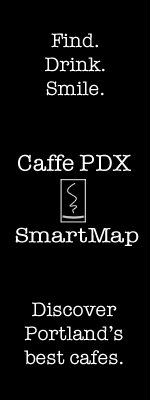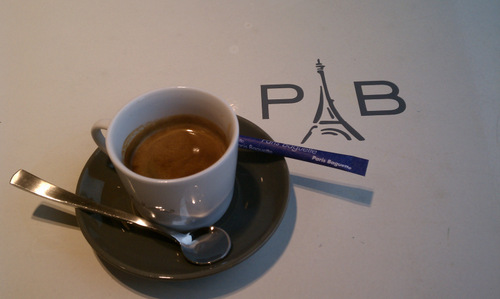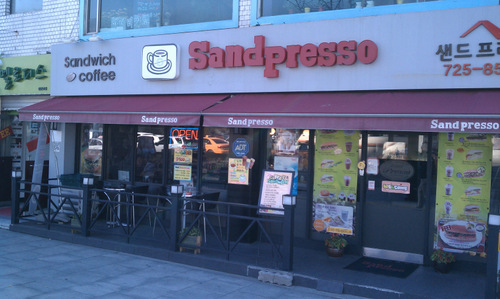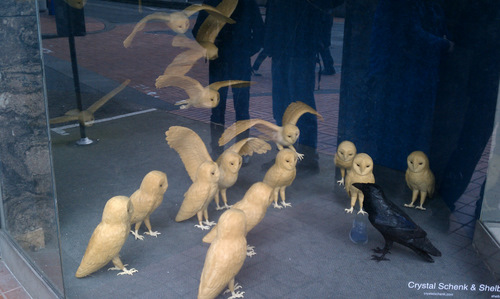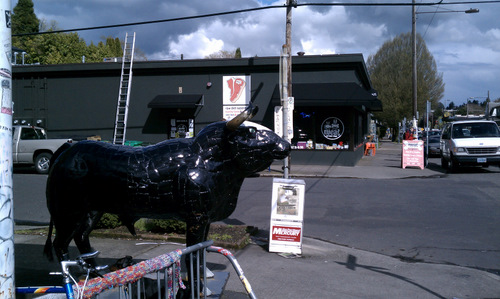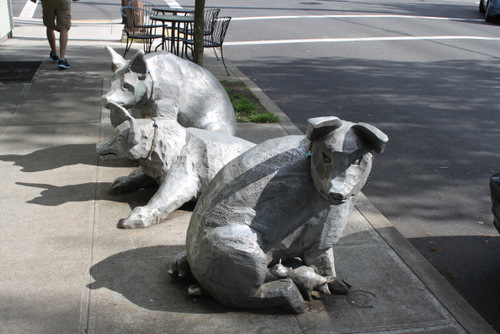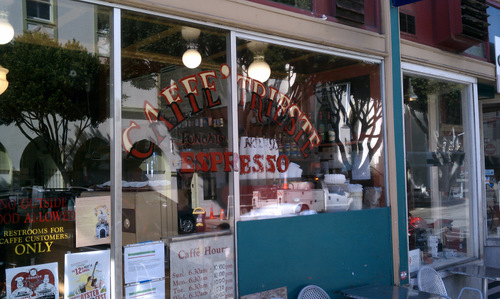Another story from San Francisco:
Anthony Salas, a barista at Paper Tiger Coffee in Vancouver, suggested that we try out Sightglass Coffee while we were in San Francisco. Always up for trying new places, we followed his recommendation. It turned out that finding the café was as memorable as the café itself.
Sightglass Coffee is located on Seventh Street, close the heart of downtown San Francisco. After lunch at the wharf, we hopped onto the cable car and rode it over the hill to Hallidie Plaza (For the record, the cable car is overrated—not much more than tourist transportation. I would estimate that 95% of the people on the car were tourists, and the other 5% were the driver and the ticket-taker. Call me a cynic, but it was not the “San Francisco treat” that you have seen on television). From the plaza, we walked down Market Street and turned onto Sixth Street. We could have walked one more block to Seventh , but I wanted to get off of Market because it was loud from all the traffic. Our chosen route made for a more interesting story, though at the time it was a little unsettling.
To give you a little background, when traveling, I do my best to not look like a tourist. Granted, this is not always possible, but I try to not saunter around gaping at tourist attractions, snapping lots of photos and being more conspicuous than necessary. I try to act like I know where I am going, and I do my best to avoid using maps in public. Tourists can be targets for mischievous or malevolent people, so it’s best to not look like one.
We probably should have done a little research about this part of the city before we went, because it would have been good to know its reputation. On Sixth Street, it was pretty much impossible to not look like a tourist. Theoretically, it could have been the safest part of San Francisco, but the neighborhood looked like it was going through a rough time. There were lots of shops that looked run down, with paint peeling off the walls, as well as many empty storefronts covered with old posters and graffiti. The shops that were open included several pawn shops and convenience stores. Groups of young black men stood around, crowding the sidewalk and watching us as we went by. It reminded me of walking around Datong, China, where the local people stared at the unfamiliar faces (us) passing by them. Even worse, I had a camera around my neck, flashing “TOURIST!” in big bold letters to everyone on the street.
I felt out of place, and asked myself if I was nervous because we appeared to be the only white people there, or if the area just gave off the impression that it was unfriendly. It was probably some of both. It can be unsettling when you visit a place where you stand out so much.
That said, I don’t think my uneasiness was much different than what people from outside Portland feel when they visit downtown and have to pass through the groups of homeless people crowding the sidewalk. Walking around downtown Portland doesn’t bother me anymore, but I have spent a lot of time there. Sixth Street in San Francisco was completely new to me.
To add to my unease, one of the things we saw as we were walking was likely a drug handoff. I could be mistaken, but seeing two men approach each other on the sidewalk and discretely pass a small paper bag between them without saying anything seemed a little suspicious. I commented to my wife that it didn’t look like they were sharing doughnuts. She agreed. We kept walking, pretending not to notice, or at least to not care.
The most memorable incident of our side trip took place a couple blocks later. As we came to the corner, a tall black man dressed in a red hat and a blue and white sweat suit looked at us in disapproval. He was talking to a group of men, and as we approached, he stepped out directly in front of us.
“. . .and someone like this honkey,” he said, glowering at me.
“Oh, sh--,” I thought.
My heart jumped when he said that, though I tried to not show any fear. We stepped around him to the left, hoping that he wouldn’t try to stop us. If he had, I’m not sure how I would have reacted. I wasn’t looking for a fight, just a coffee shop. Fortunately, the man made no other moves to block us—he had already made it clear enough that we weren’t welcome in his neighborhood. We kept walking, glad to soon reach our destination.
Looking back on our misadventure, I doubt we were ever in any real danger. We were uncomfortable, but no harm came of it. After all, the man made no physical contact with us. All he did was call me a honkey, which is actually kind of funny. I haven’t been called that since the days when I used to play a lot of basketball. There was always lots of creative things said in the heat of the games.
All in all, our quick trip to Sightglass was a memorable one. We found some pretty good coffee and we came away with a story to tell.
 Wednesday, October 2, 2013 at 8:43AM
Wednesday, October 2, 2013 at 8:43AM 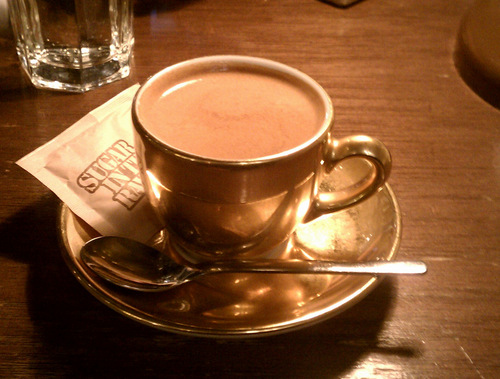 One of my espressos in Seoul last yearThe idea for the tour came from Jinsu Lee, a friend of mine who spent several years in Portland before returning to Korea. He wanted to maintain some ties with Portland, so he approached Mr. Song-dae Hong, the owner and CEO of COFFEE magazine, with the idea of putting a coffee tour together. The proposal received a great response, and sold out. I am in charge of organizing the Portland leg of the tour, which runs from tonight through Saturday. After visiting Portland, the group heads to Seattle to attend one day of Coffee Fest, before leaving for Seoul on Monday.
One of my espressos in Seoul last yearThe idea for the tour came from Jinsu Lee, a friend of mine who spent several years in Portland before returning to Korea. He wanted to maintain some ties with Portland, so he approached Mr. Song-dae Hong, the owner and CEO of COFFEE magazine, with the idea of putting a coffee tour together. The proposal received a great response, and sold out. I am in charge of organizing the Portland leg of the tour, which runs from tonight through Saturday. After visiting Portland, the group heads to Seattle to attend one day of Coffee Fest, before leaving for Seoul on Monday.